Last of a series featuring highlights of my recent research at the Library of Congress.
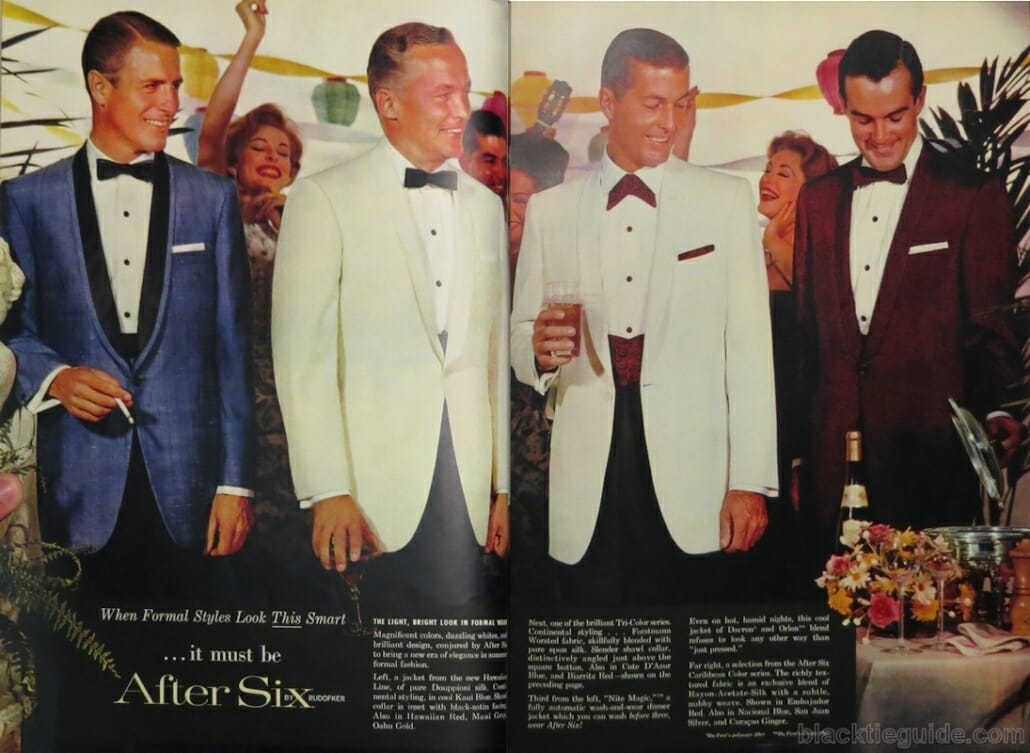
The Jet Age was definitely a mixed bag when it came to formal fashions. The late 1950s and early 1960s marked a transition from the limited experimentations of the relatively conservative 1930s into the anything-goes attitude of the sixties and seventies. The styles shown in this 1960 ad remained largely faithful to basic principles of formal attire while injecting distinct modernity. Personally, I just love the exuberance of After Six ads from this period. While their competitors were sticking to somber black-and-white tones that had suited formal wear ads since the turn of the century, After Six was the first to acknowledge and embrace the changing tide. By making formal wear fun, they made it relevant to a whole new generation.
However, the further that Jet-Age innovations strayed from formal wear’s role as a preserver of sartorial history, the less appropriate they became.
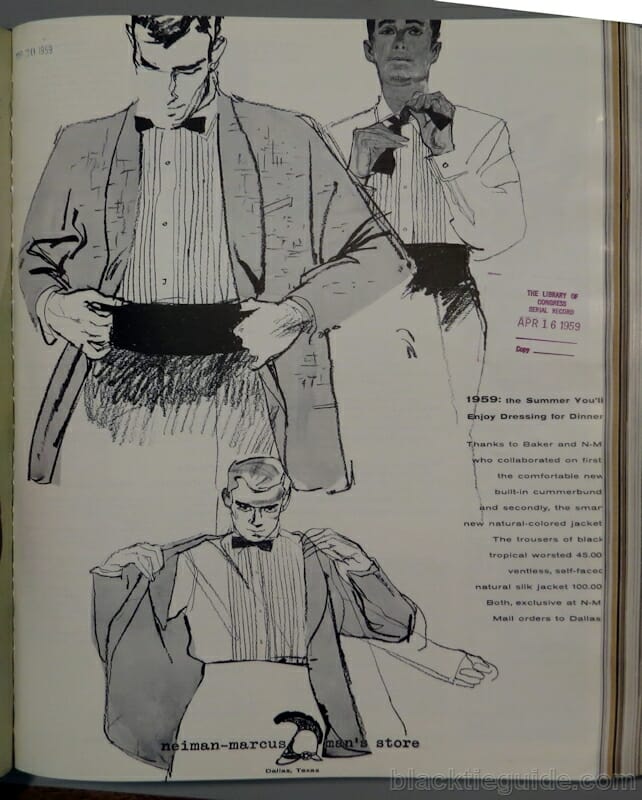
1959 marked the arrival of the built-in cummerbund which, while not the worst of ideas, was definitely a step down in formal elegance.
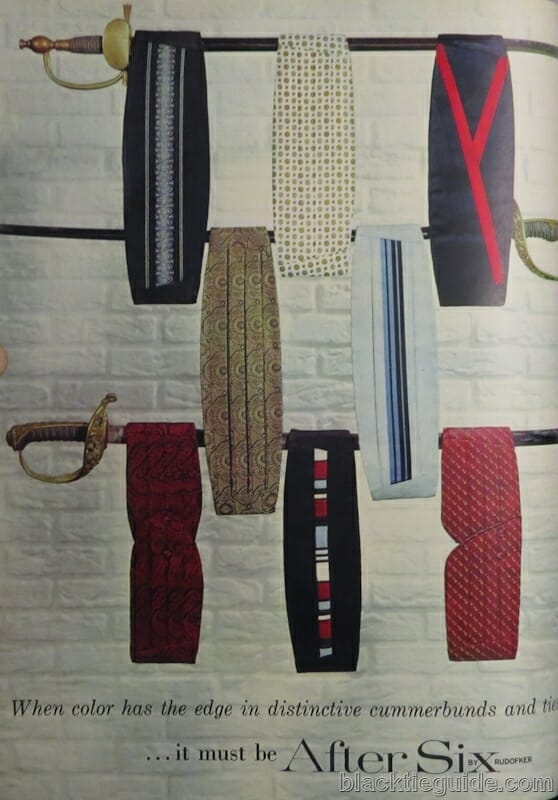
After Six cummerbunds and cummervests were becoming distinctly flashy and even avant-garde by the time this ad appeared in a 1960 issue of GQ.
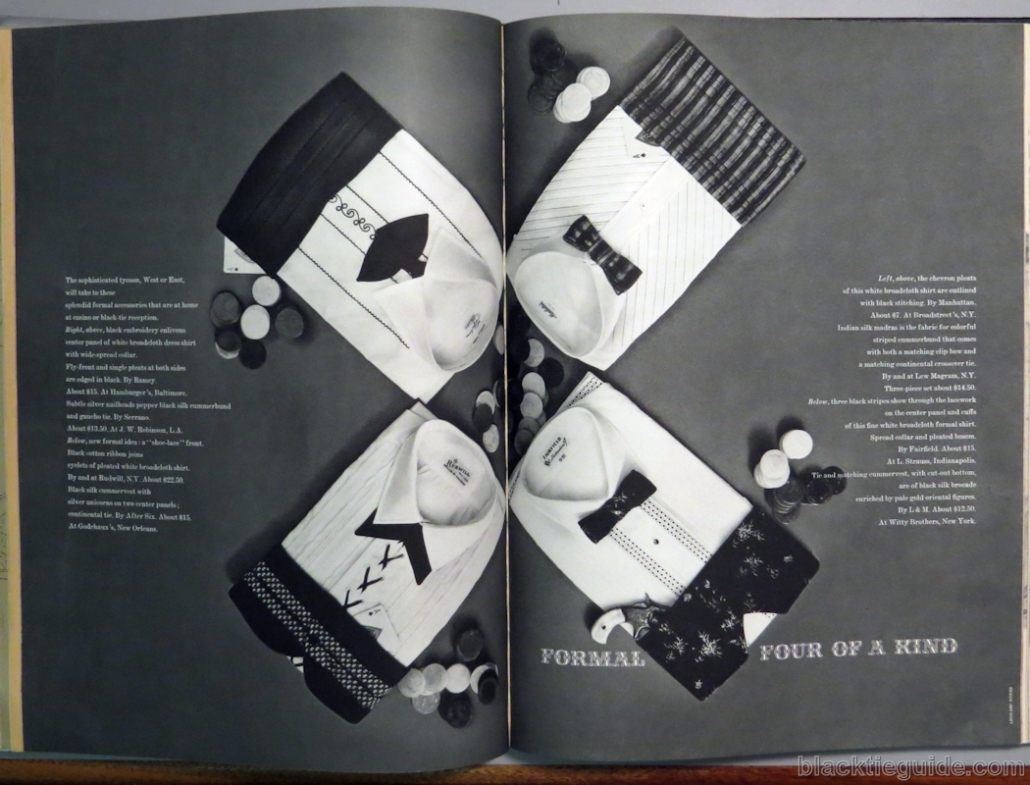
A far-out assortment of designer formal accessories featured in the November 1960 GQ. Clockwise from top left:
- “Black embroidery enlivens center panel of white broadcloth dress shirt with wide-spread collar. Fly-front and single pleats at both sides are edged in black. Subtle silver nailheads pepper black silk cummerbund and gaucho tie.”
- “The chevron pleats of this white broadcloth shirt are outlined with black stitching. Indian silk madras is the fabric for colorful striped cummerbund that comes with both a matching clip bow and a matching continental crossover tie.”
- “Three black stripes show through the lacework on the center panels an cuffs of this fine white broadcloth format shirt. Spread collar and pleated bosom. Tie and matching cummervest, with cut-out bottom are of black silk brocade enriched by pale gold oriental figures.”
- “A new formal idea: a ‘shoe-lace’ front. Black cotton ribbon joins eyelets of pleated white broadcloth shirt. Black silk cummervest with silver unicorns on two center panels, continental tie.”
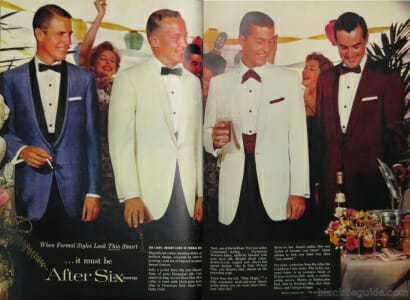
For anyone who thinks bad ideas were limited to the ’70s through today…
Very true that After Six made semi-formal wear fun and thus relevant to the next generation, but I have to wonder exactly what that it was relevance to. I always get the feeling, looking at ’30s illustrations or photos and similar ones from the ’50s and ’60s that any sense of elegance or even style was a permanent casualty of the war years. While the people in the top illustration look nice enough, as I look at them I am reminded of Gertrude Stein’s comment about Oakland – “When you get there, there isn’t any there there.” And thus it was with the Jet Age.
I also note with not a little disappointment that this series has come to an end. I do hope that the insights you have gained through your research will pop up in future postings as they have been both highly interesting and educational.
Thank you, Peter.
I’m glad you liked the series. I’ll be doing similar research at the New York Public Library in New York City this fall so there may be some more interesting tidbits to come . . .